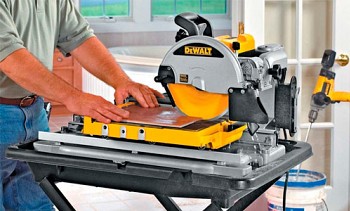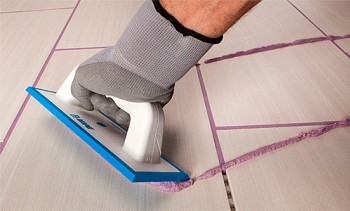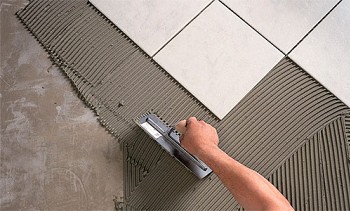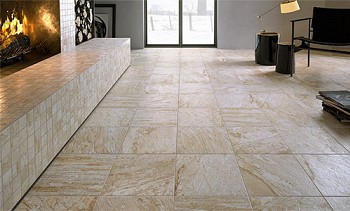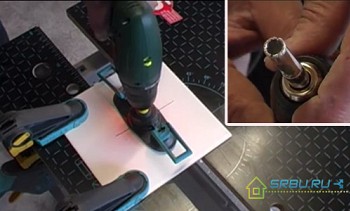How and how to cut tiles at home
The question of how to cut tiles arises not only among professional tilers, but also among ordinary people who are going to do the finishing work at home with their own hands. Today, several types of tools for cutting tiles are produced, which differ in the way they perform the operation, the quality of the cut that they give, at the price.
To choose the device consciously, not to be mistaken in the price, nor in the convenience of use, nor in the quality of the obtained tile seam, you need to get acquainted with the features and capabilities of each type of cutting tool.
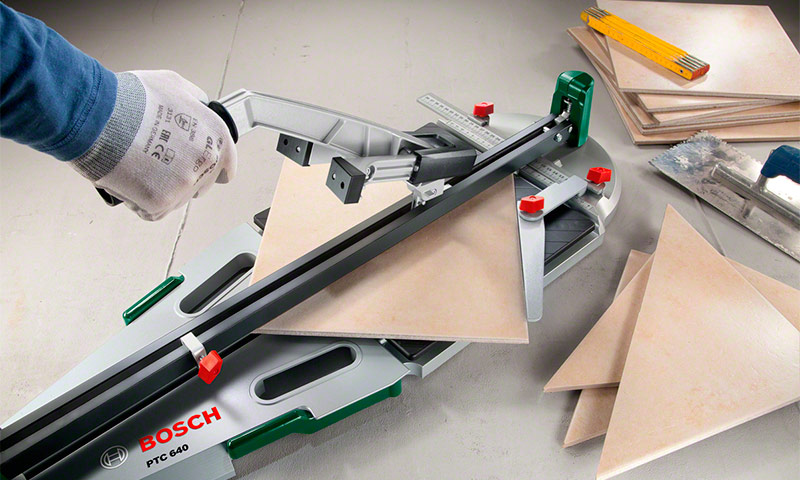
- What are the tools for cutting tiles, what is their difference
- Glass Cutter - A Cheap and Practical Tool
- Manual tile cutter - a traditional tool
- Electric tile cutter - a tool for professionals
- UShM (Bulgarian) - a multifunctional tool
- Jigsaw - quick cut along a curved line
- Hand saw with diamond spraying file
- Ceramic Nippers
- The use of tools depending on the tasks
What are the tools for cutting tiles, what is their difference
All tools for cutting a tiler can be divided into: hand tools (glass cutter, tile cutter, nippers) and power tools (electric stove, angle grinder, jigsaw).
The choice of each tool depends on several factors:
- The volume of work performed. For cutting one or two tiles, a glass cutter or grinder is enough, to finish the entire apartment or house you need a tile cutter.
- The type and quality of the cut to be done. Straight and curved cuts are performed with different tools, diamond crowns and a drill may be needed to drill round holes. To cut thin wall tiles and thicker, more durable floor porcelain tiles, you need to use different equipment.
- Execution speed. The larger the area on which the tile is laid, the better the tool for processing it should be.
- The amount of money that the master is willing to pay for the instrument. Professional manual and electric tile cutters are expensive, but you can get by with more affordable tools.
Professional tilers, as a rule, have a full set of cutting tools to solve any problems. For independent laying of tiles by the owner of the house, it is not necessary to purchase expensive professional appliances, you can perform work with inexpensive equipment or rent a power tool in a hardware store.
Glass Cutter - A Cheap and Practical Tool
Glass cutter is a traditional manual glass cutting tool that can be used to cut thin ceramic tiles. It is cheap and affordable for everyone - it costs 150-200 rubles. The glass cutter is a device with a pen-shaped pen, on the end of which a rotating roller is fixed. A sharp roller is made of hard material that can cut a hard surface.
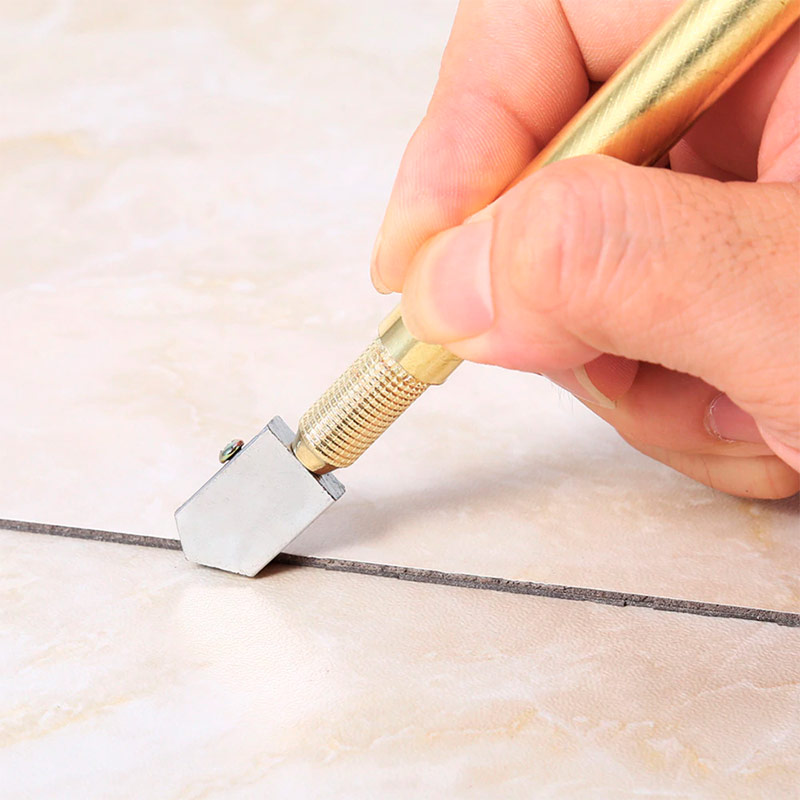
Glass cutter.
There are several types of glass cutters on sale that differ in design features:
- Roller. This is the traditional, easiest type of glass cutter. Its cutting roller is made of high strength alloy of tungsten and cobalt.Roller glass cutter is able to cut glass, porcelain, tile up to 10 mm thick.
- Diamond. In it, the metal roller is replaced by a natural or artificial diamond. This solution gives a more accurate cut, suitable for working with thin tiles up to 6 mm.
- Oil. It differs from a simple roller by the presence of a lubricant that reduces friction, increases the service life of the device. This is a professional tool that is more expensive than roller models, lasts longer, cuts material 12 mm thick.
Glass cutters are the simplest tool that is suitable for straight cuts of wall tiles of small thickness. For working with floor ceramics, porcelain stoneware, cutting along a curve or at an angle of 45, it is not used. For large volumes of work you need to get another tool.
Consider step by step how to cut a tile with a glass cutter:
Step 1. Markup.
The cut line is marked on the surface of the tile with an ordinary pencil or marker.
Step 2. Fixing.
To fix, hold the tile with your left hand, applying a ruler or straight rail to the cutting line as a stop, so that the roller does not slip off the smooth tile surface.
Step 3. Section.
When working, the glass cutters are held, like a handle, in the right hand. The cut is done in one motion, tightly pressing the cutting roller to the surface. During the cut, a characteristic sound should be heard indicating the cutting of the upper layer of the tile. After the cut is made, a glazing bead is placed under the tile with the marked fault line and pressed along opposite edges. The tile breaks at the place of cut.
Step 4. Finalization.
The seam is neat, but not perfect. Abrasive materials, such as sandpaper, are used to process the edges.
Manual tile cutter - a traditional tool
Manual tile cutter provides more comfort and convenience in operation compared to a glass cutter, as it is specially designed for cutting ceramic tiles and porcelain tiles. It represents a bed with guides along which the carriage with a cutting roller and a lever moves. Models differ in design: there are two rails and monorail.
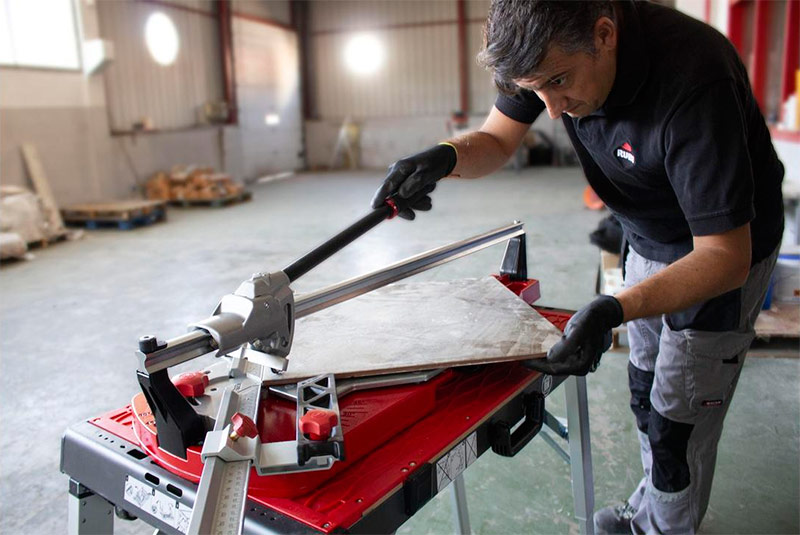
Tile cutter with one guide.
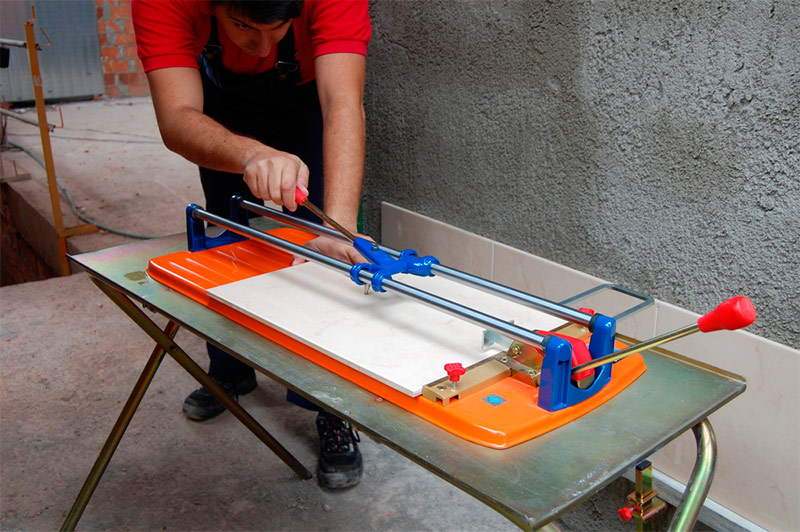
Tile cutter with two guides.
Manual tile cutter copes with any type of ceramic and porcelain tile, regardless of the thickness of the material - they can cut wall and floor tiles up to 40 mm thick. Tile cuts make straight cuts, at an angle, diagonally. Curved cuts are not performed.
The equipment of specific models is individual: a protractor, a ruler, a device for drilling holes (ballerina) can be built into them. It is necessary to choose a model according to the size of the tile material: the width of the table of the tile cutter is from 30 to 70 cm, the tile must be placed on the table along the length with a margin. The cost of a particular model of a manual tile cutter depends on the number of functions that it can perform.
Consider step by step how to cut a tile with a manual tile cutter:
Step 1. Markup.
The marking process is standard - on the upper surface there is a line along which it is supposed to make a cut.
Step 2. Fixing.
Fixation of the processed material in the tile cutter is very reliable: the tile is placed on special rubber pads that prevent it from sliding. Fastening is carried out on the stop, which ensures complete immobility of the material and the accuracy of the cut.
Step 3. Section.
The incision is made in one pass without significant physical effort. The master does not need to try to cut the tile into two parts at once or crush with all the weight: just a little pressing is enough to cut. The handle of the machine is taken over and the roller cutter is set to the very beginning of the intended line, then the roller is moved forward with confident movement. After the cut is made, the handle rises and sets into a position for breaking. Then the foot drops, which presses on the tile and breaks it exactly along the formed groove.
Step 4. Finalization.
The seam is smooth and neat, but you can finish it with sandpaper.
Manual tile cutters will cost more than glass cutters, but any master tiler needs them. To repair your apartment or house, a tile cutter on the bushings is enough, and for professional work it is better to purchase a bearing model: it lasts longer, but cuts more accurately and accurately.
Electric tile cutter - a tool for professionals
Electric tile cutter belongs to the class of professional equipment, so it is expensive. His purchase pays off if the master is professionally engaged in finishing work on laying tiles. The electric tile cutter is a full-fledged machine on which you can cut any non-metallic material: ceramic tiles, porcelain tiles, natural stone, concrete, porcelain.
The machine performs a large number of operations: straight-line cuts, cuts diagonally, saws at any angle, makes chamfers up to 45 degrees, notches, grooves, technological cuts. The cutting line is perfectly flat, smooth, without chips. An electric machine does not make curved cuts.
The design of the electric cutter is complex: there is a bed, an electric block with a carbide disk with diamond coating, a fixing system, a water tray. There are two types of models for electric tile cutters.
The most common are the models in which the disk is fixed at the bottom of the case and half out of the base. The second half is at the bottom and is constantly in contact with the water poured into the pan. In electric tile cutters of this type, the cutting disc is rigidly fixed, and for making a cut it is necessary to move the tile.
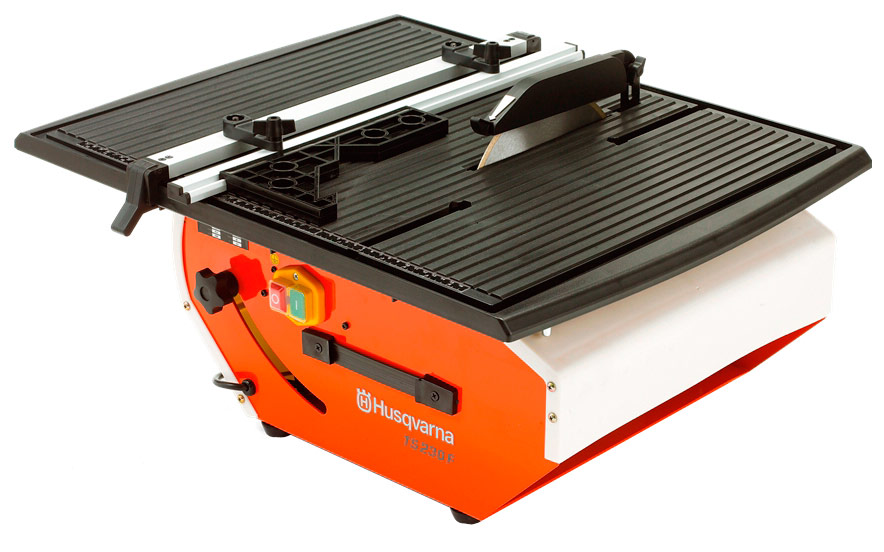
Electric tile cutter with lower disk layout.
Less common are glass cutters in which the disk is located on top of a special guide and moves along the working surface on which the tile rests. Water in these models is supplied directly to the cutting disc.
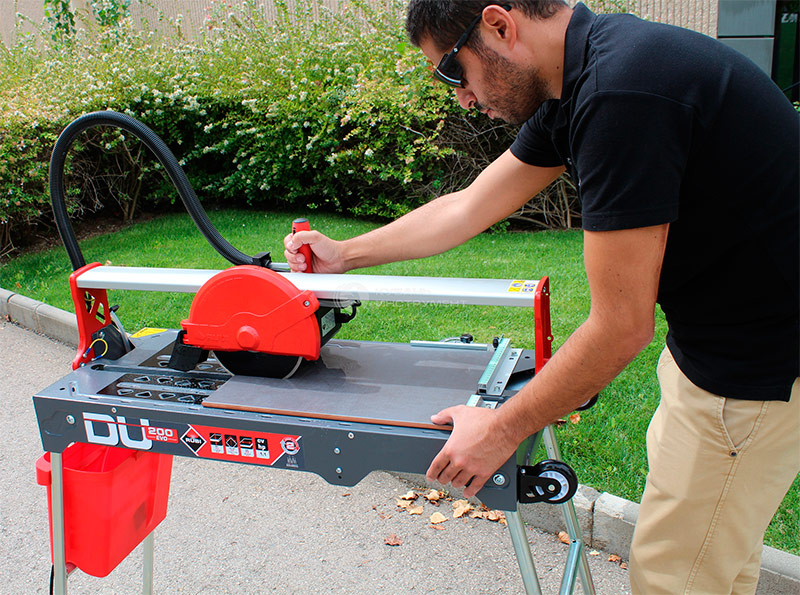
Electric top cutter.
Let's take a step-by-step look at how to make tile cuts with an electric tile cutter:
Step 1. Preparation.
Before cutting, pour a quantity of water into the tile cutter tray.
Step 2. Markup.
Mark cutting lines can be directly on the machine, where there is a system of rulers, transportation with clear and precise divisions. Therefore, the tiles are immediately laid on the machine.
Step 3. Section.
Turn on the tile cutter and make sure that the water flows around the cutting disc. Then bring the tile to the cutting disk with the necessary place and pushing the tile through the disk to cut.
Step 4. Finalization.
As a rule, finishing abrasive finishing is not required - the edges are flat, smooth, without chips. But if the edge of the tile is rough, smooth it with sandpaper.
UShM (Bulgarian) - a multifunctional tool
Cutting tiles with manual or electric tile cutters involves the purchase of these tools, which in the case of homework is not always justified. In addition, after carrying out tile work, these tools you can no longer use anywhere else.
For a home master, a good solution may be the use of angle grinders (grinders). But working with this tool is specific.
First you need to determine the size of the angle grinder itself. The best option for cutting tiles would be a grinder with a 125 mm disc. It is convenient to hold in her hands and perform manipulations.
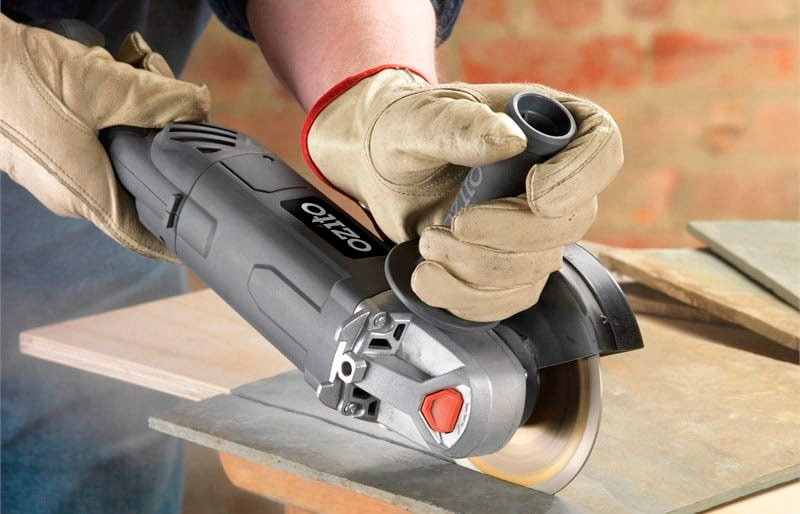
Angle grinder with 125 mm disc
Grinders with a disk diameter of 230 mm., It is better not to use for such work. The tool is very bulky, which complicates the manipulation and significantly affects the quality of the cut. It is permissible to use angle grinders with a disk diameter of 180 and 150 mm, but only if cutting thick tiles or porcelain tiles.
You can cut all types of ceramic tiles with a grinder - wall, floor and even porcelain. Without problems, you can make straight cuts, at an angle, and some curvilinear.
To simplify the work, you can consider buying a special nozzle on the angle grinder - “Slider”.
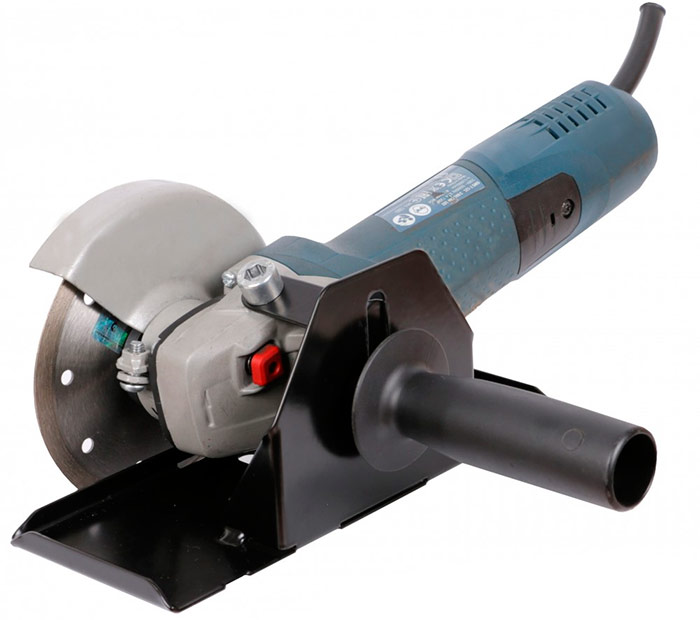
Angle grinder with nozzle slider.
Let's consider step by step how to cut ceramic tiles with a grinder without chips:
For cutting ceramic wall or floor tiles, a solid diamond blade for dry cutting must be used.
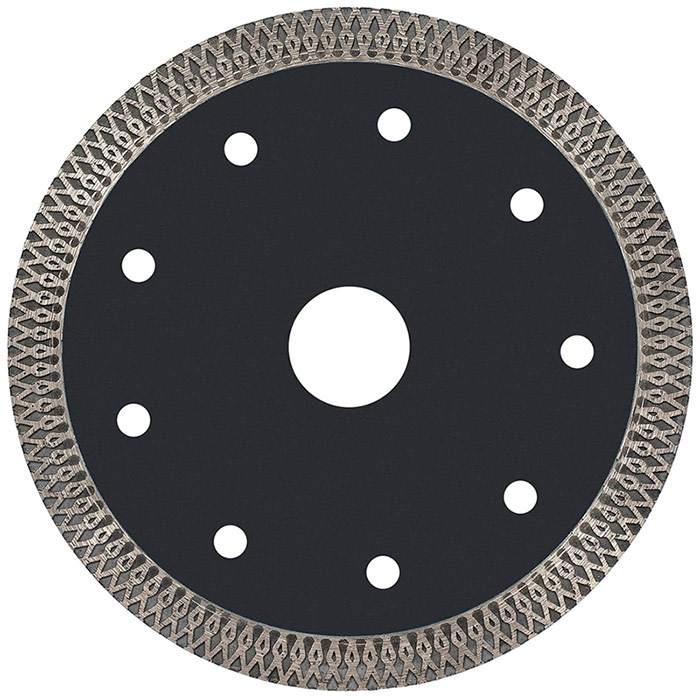
Disc for cutting ceramic tiles.
It is imperative to work in a protective mask and goggles, since when dry cutting tiles creates a large amount of dust. Due to dust, this cutting method is not always suitable for an apartment. In the absence of proper experience, the cutting lines do not differ in purity and accuracy. It is best to make a few training cuts.
Step 1. Markup.
The place of the cut is outlined in the standard way: the lines are drawn on the plane with a pencil, marker or chalk.
Step 2. Fixing.
The tile is fixed in place with clamps.
Step 3. Section.
The incision is made towards yourself, the disk is perpendicular to the surface. Sometimes movements are made by the grinder back and forth to lower the heating temperature. To prevent chips from forming on the front surface, the angle grinder needs to be tilted slightly to the side. If the cutting angle is less than 900, then chips do not form.
Step 4. Finalization.
Abrasive processing of edges when working with angle grinders is necessary. If you used an abrasive disk with a special nozzle "Slider", then you will have to grind the edge less, since the number of chips is minimized. Grinding the edge is done by the same grinder that was used for cutting, or with an emery cloth attached to the bar.
How to cut porcelain tiles with a grinder:
Next, we will consider how to cut porcelain tile at home. For cutting porcelain tiles, it is necessary to choose circles with a diamond coating of a continuous type, designed for wet operation. When choosing a circle, pay attention to the maximum permissible rotational speed, it should correspond to the rotational speed of the angle grinder.
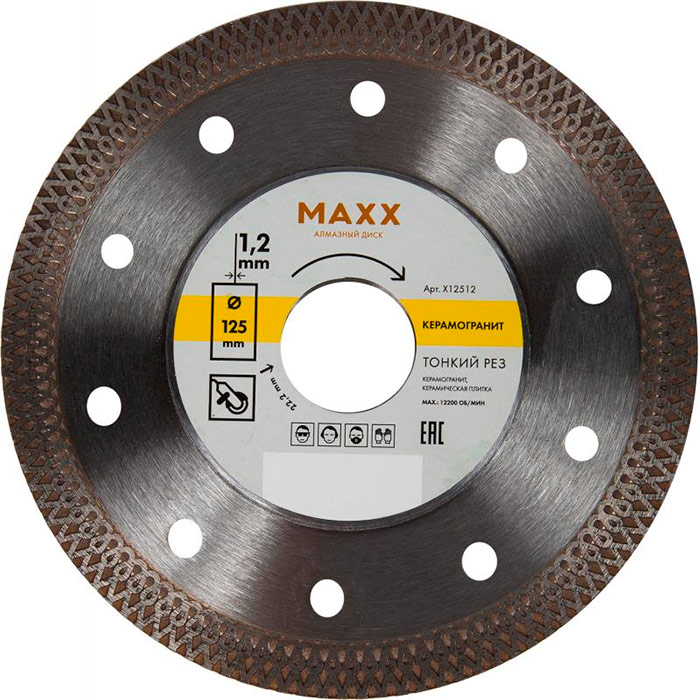
Porcelain tile cutting disc.
Porcelain cutting must be carried out with a constant supply of a small amount of water. Otherwise, spraying on the disk will not last long and it will quickly cease to fulfill its functions. Therefore, before work, it is necessary to prepare a plastic bottle of water, previously puncture a hole in the bottle’s cork.
Step 1. Markup.
Lay out porcelain tiles best with a marker.
Step 2. Fixing.
Kramogranit needs to be fixed with clamps on a reliable, not shaky foundation
Step 3. Res.
By moving to yourself on the surface of porcelain stoneware it is necessary to apply a thin groove. Then the cut line must be moistened with water and again a shallow cut is made by moving towards yourself. These operations must be repeated until the tile is completely cut.
Step 4. Finalization.
At the bottom of the cut, the tile may have roughness. To refine it, it is necessary to turn it on the back side, clamp it with a clamp and use the angle grinder and diamond blade to sharpen the edge a little.
Jigsaw - quick cut along a curved line
Jigsaws are tools specially designed for figured cutting of materials. It is convenient to use an electric jigsaw when you need to make a curved cut in a tile that cannot be performed with other tools.
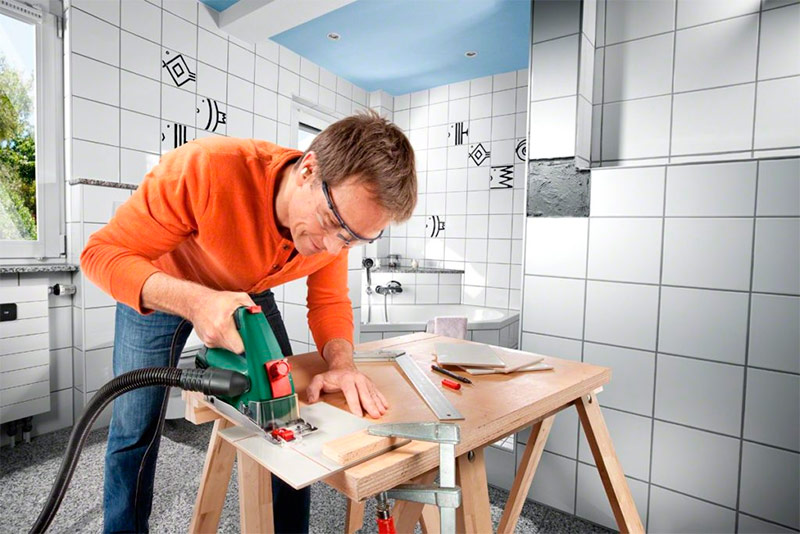
Using a jigsaw to saw tiles.
To work with a jigsaw on a tile, files for cutting glass and ceramics are purchased. An electric jigsaw with nail files on ceramics can make a curved cut of wall and floor tiles, they can cut internal holes of various shapes.

File for ceramic tiles.
When cutting tiles, it is necessary to turn off the pendulum stroke of the jigsaw, as this can greatly affect the quality of the cut.
Let's take a step-by-step look at how to cut a tile with a jigsaw:
Step 1. Markup.
Cut lines are marked with a marker on the surface. If an internal cutout is made in the tile, then a small hole is pre-drilled into which the file is inserted. Then, a curved cut is carried out inside the intended line.
Step 2. Fixing.
When working with a jigsaw, the processed material is located on a flat horizontal surface.It can be fixed with clamps or held by hand.
Step 3. Section.
The incision is made in the direction away from you with standard movements adopted when working with a jigsaw.
Step 4. Finalization.
After cutting, the seam is finalized: the edges are ground with abrasive material.
Hand saw with diamond spraying file
It is convenient to make curvilinear cuts with a manual jigsaw, but to work with durable ceramics, a diamond-coated saw is needed. With this tool, you can process both wall and floor ceramics.
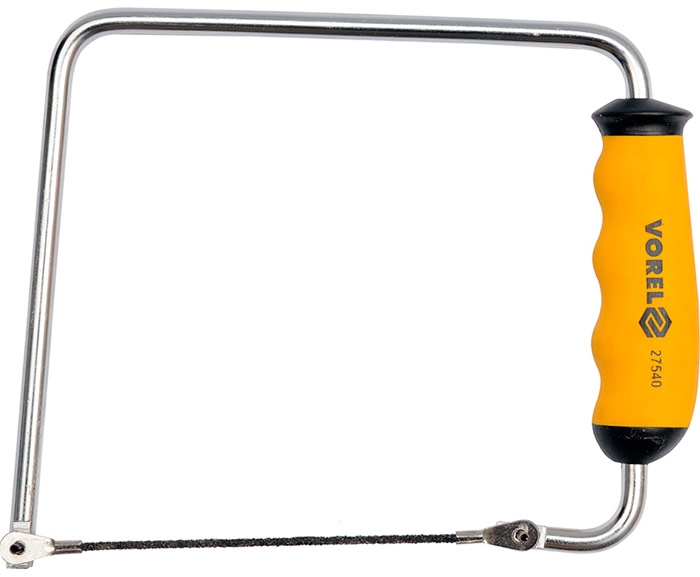
Manual jigsaw with a file for tiles.
Let's take a step-by-step look at how to cut tiles with a hand jigsaw:
Step 1. Markup.
Performed by a marker on the surface.
Step 2. Fixing.
When using a manual jigsaw, you can hold the tiled product with your hand.
Step 3. Section.
Part of the whole is sawn off in a standard way. You can pre-stick paper tape at the place of cut - there will be less chips and dust.
Step 4. Finalization.
Finishing the edges after cutting is necessary.
Ceramic Nippers
Nippers - a specific tool with short cutting blades, designed not for cutting, but for breaking off (biting) brittle material. They are needed as an auxiliary tool for processing the edges after cutting the tiles with a grinder or tile cutter.
There are two types of nippers for ceramic tiles: classic pincers and advanced ones - with a roller cutting element.
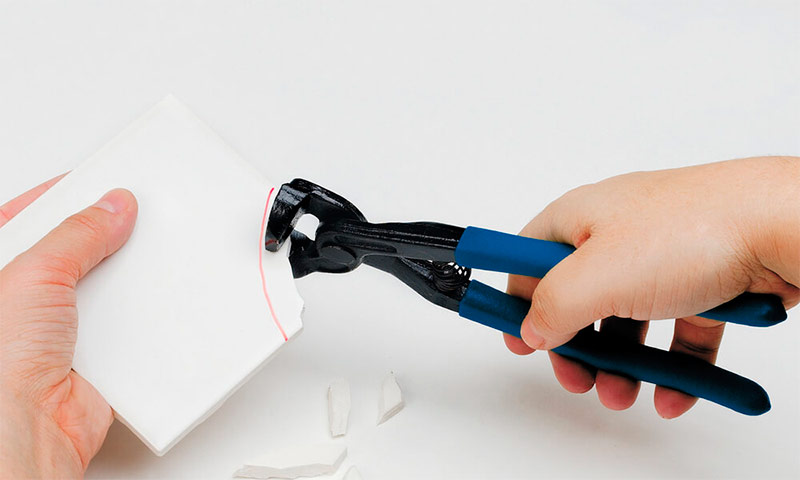
Ordinary tile cutters.
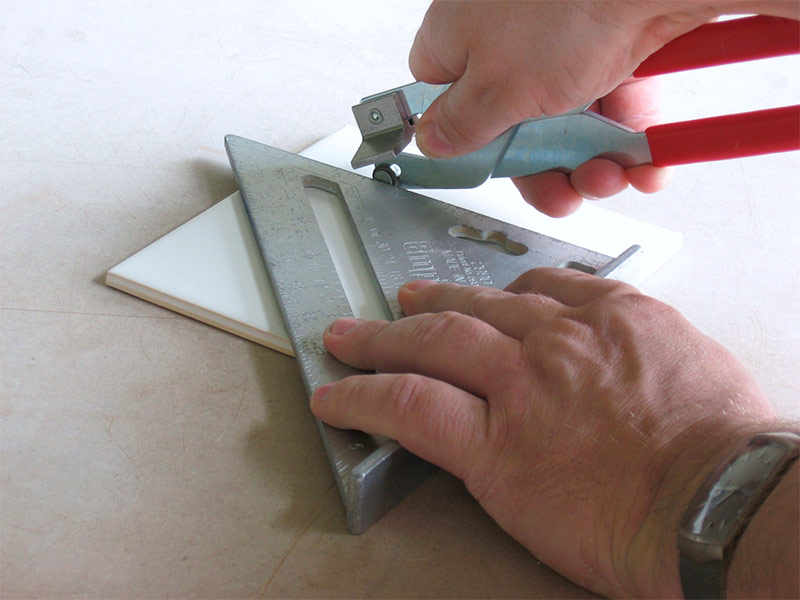
Nippers with a roller cutting element.
In the latter case, the roller element performs the functions of a glass cutter, after holding it on the surface, the tile breaks in the place of the cut.
Nippers are available in different sizes - you can buy several to break off small and large pieces. This tool is indispensable if you need to trim narrow edges with a width of about 0.5 cm.
Let's take a step-by-step look at how to work with ceramic nippers:
Step 1. Markup.
On the surface of the tile, traditional marking is made with a marker, sometimes they do without it.
Step 2. Fixing.
The processed element is located on a horizontal plane or simply holds tightly in the hand. If the nippers have a roller element, then during work it is better to attach the processed tile to the stop, and draw the line along the ruler.
Step 3. Bite off.
Break off small pieces of the tile, when biting off large pieces of the tile may be damaged.
Step 4. Finalization.
Since the wire cutters do not perform cutting operations, but break off the material, the edges after that remain uneven, with chips that need to be removed. After work, careful grinding of the edges is necessary.
The choice of tool and method of cutting tiles depends on its strength, working conditions, skill of the master. The better it is to cut the tiles, each master decides on his own. Knowledge of tools and the features of working with them will allow you to choose cutting tools consciously.
The use of tools depending on the tasks
| Tool name | Straight cuts of wall tiles | Straight cuts of floor tiles | Rectilinear cuts of porcelain tile | Curved cuts | Tile cutting at an angle of 450 |
|---|---|---|---|---|---|
| Glass cutter | |
||||
| Manual tile cutter | |
||||
| Electric tile cutter | |||||
| Angle grinder | |
||||
| Jigsaw | |
|
|||
| Jigsaw | |
||||
| Simple nippers | |||||
| Wire cutter |

